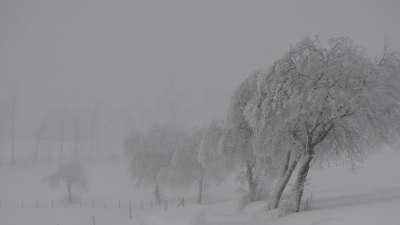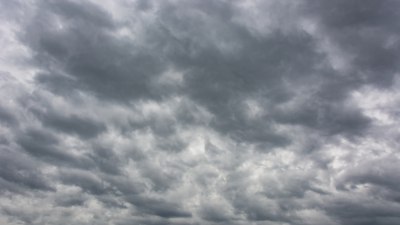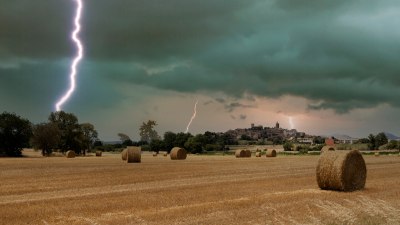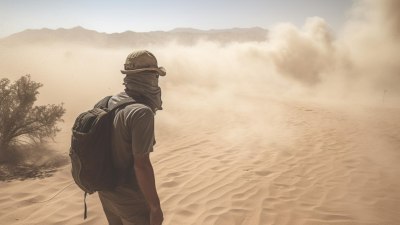Why Are Some Windstorms Called Derechos
Explore the phenomenon of derechos, unique windstorms with specific characteristics and origins.

Derechos are a fascinating and often misunderstood meteorological phenomenon. Unlike regular thunderstorms, which can produce a variety of severe weather like tornadoes or hail, derechos are characterized by straight-line wind damage that can extend over a wide area.
Often, the term 'derecho' is used to describe a specific kind of long-lived windstorm that produces damaging winds and can travel for hundreds of miles. The word 'derecho' itself is derived from the Spanish word for 'straight', which is reflective of the straight-line winds that are typically associated with these storms. To understand derechos more thoroughly, it's important to examine their formation, characteristics, and the conditions that lead to their development.
Definition and Characteristics
A derecho is defined as a windstorm that produces a path of damage that is at least 240 miles long and can have wind gusts exceeding 58 miles per hour. The characteristics that define a derecho include its duration, straight-line winds, and the significant damage it can cause over a large area. Traditionally, a storm is classified as a derecho if its damaging winds are associated with a line of thunderstorms known as a convective system, which can include squall lines or bow echoes.
One of the key features that distinguish derechos from other storm types is their organized nature. Derechos are typically associated with well-defined bands of thunderstorms, which can lead to continuous regions of strong winds as they travel across the landscape. Unlike tornadoes, which tend to be short-lived and localized, derechos impact broad areas and can cause widespread destruction—making them particularly dangerous.
Formation of Derechos
The formation of a derecho usually requires a few specific atmospheric conditions. First, a source of instability in the atmosphere is needed, which often comes from warm, moist air rising rapidly in the presence of cooler, drier air. In addition, wind shear—the change in speed and direction of winds with altitude—plays an essential role in the development of derechos. When wind shear is moderate to strong, it can help organize thunderstorms and promote the long-lived nature of a derecho.
Derechos often form in the warm season, especially during the months of late spring and summer, when atmospheric instability is maximized due to heat and humidity. They most commonly occur in the Central and Eastern United States, particularly along the warm and moist air masses that encounter cooler systems moving in from the north or the west.
Types of Derechos
There are several types of derechos, categorized based on their formation and associated weather patterns. The two principal types are:
- Progressive Derechos: These derechos involve a series of thunderstorms that follow one another, with new storms developing as older ones dissipate. They are usually associated with a wind system that shifts and evolves over time, maintaining strength as they move across a region.
- Serial Derechos: This type of derecho is characterized by a long, straight line of thunderstorms that remain relatively unchanged for a certain period, producing widespread, intense straight-line winds. These storms often travel in a more uniform direction.
The existence of a mixed layer (a region of relatively uniform temperature and moisture) in the atmosphere can also contribute to the longevity and strength of a derecho. When additional energy is present in the storm system, it enhances the potential for severe wind production.
Impact and Damage
The impact of derechos can be devastating, with reports of damage comparable to or worse than that of tornadoes over extensive areas. Common effects include downed trees, damaged homes and buildings, destroyed crops, and knocked-out power lines, which can result in widespread power outages. The swiftness and intensity of wind gusts in a derecho can lift and toss debris, leading to flying projectiles that pose additional hazards to people and property.
In urban areas, derechos often complicate emergency responses, as first responders deal not only with debris clearing but also with downed power lines and potential fires. The overall economic impact can be significant, with numerous clean-up costs and damage reassessments to property.
Warnings and Preparedness
Because of their rapid onset and severe nature, it's essential to be prepared for derechos. Meteorologists monitor atmospheric conditions and can issue severe thunderstorm watches and warnings when conditions are favorable for the development of a derecho. Understanding the difference between a severe thunderstorm watch (indicating that conditions are right for storms to develop) and a warning (indicating that a storm capable of causing severe damage has been observed) is crucial for safety.
When a severe thunderstorm warning is issued, individuals should take shelter indoors, away from windows, and be prepared for possible power outages. Ensuring that an emergency supply kit is available, including water, food, medications, a flashlight, and batteries, is extremely valuable during any severe weather event.
Conclusion
Derechos serve as an important reminder of the power of nature and the potential for extreme weather to impact lives and communities. Understanding the characteristics, formation, and impacts of these strong windstorms can lead to better preparedness and response to ensure safety. Knowledge about derechos not only helps meteorologists to predict and warn of these storms, but also aids the public in taking the necessary precautions to protect themselves and their property.
As climate change continues to affect weather patterns, understanding the behavior of storms like derechos is essential for predicting their frequency and severity in the future.











